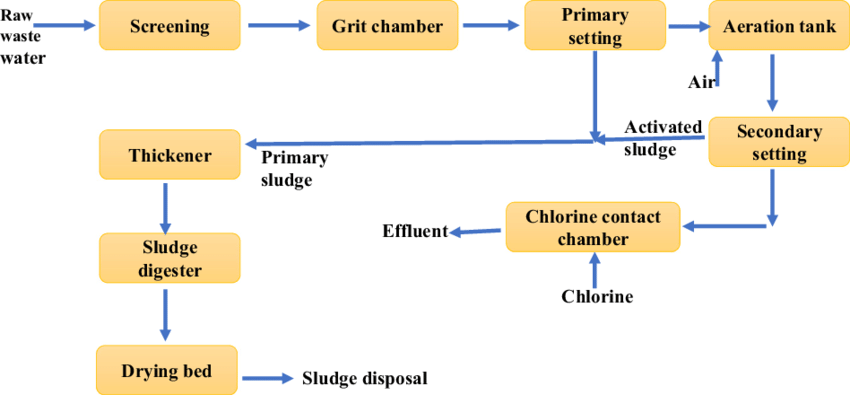The Single Strategy To Use For Reclaim Waste
The Single Strategy To Use For Reclaim Waste
Blog Article
Everything about Reclaim Waste
Table of ContentsLittle Known Facts About Reclaim Waste.Reclaim Waste - TruthsFacts About Reclaim Waste UncoveredSome Known Facts About Reclaim Waste.A Biased View of Reclaim Waste
Domestic sewage waste refers to the waste and items from a household septic storage tank. The proper monitoring and disposal of domestic sewer waste require liquid waste to be moved to a sewage treatment plant where the correct techniques and devices are applied to purify and dispose of waste.
Commercial waste often consists of possible threats, such as combustible products or a mixture of fluid and solid waste products, and requires an advanced and comprehensive disposal procedure. The disposal of business waste usually entails the filtration of waste before transport to ensure risk-free and proper disposal. Industrial waste is developed from byproducts and overflow of commercial processes and manufacturing.
This kind of waste can not use the same sewage management transport or procedures as septic or business liquids. The hazardous waste administration procedure calls for the inspection and testing of liquid waste prior to it undertakes the disposal procedure (liquid waste disposal melbourne). Drainage waste is the fluid waste that comes from runoff and excess stormwater in extremely booming areas or cities
Runoff waste can cause contamination and flooding otherwise taken care of properly. Discover more regarding drain cleaning and waste administration. Ensuring appropriate waste administration can stop disasters and minimize environmental injury. Both individuals in property setups and professionals in commercial or manufacturing sectors can profit from understanding the processes and guidelines of fluid waste monitoring.
Reclaim Waste Fundamentals Explained
Call PROS Services today to learn more about our waste administration and disposal solutions and the proper methods to look after the liquid waste you generate.
(https://justpaste.it/fauht)This supposed 'wastewater' is not only a crucial source but, after therapy, will certainly be launched to our land, waterways or the sea. Made use of water from bathrooms, showers, baths, cooking area sinks, laundries and industrial processes is understood as wastewater.

water utilized to cool down machinery or clean plant and tools). Stormwater, a form of wastewater, is overflow that moves from agricultural and metropolitan locations such as roofing systems, parks, yards, roadways, courses and rain gutters right into stormwater drains pipes, after rain. Stormwater streams untreated directly to regional creeks or rivers, at some point reaching the ocean.
Get This Report on Reclaim Waste
In Queensland, the majority of wastewater is dealt with at sewage therapy plants. Wastewater is transported from domestic or commercial websites with a system of sewage systems and pump terminals, referred to as sewerage reticulation, to a sewage therapy plant. Local federal governments construct, maintain and operate most sewage treatment plants. Operators are licensed under the Environmental Management Act 1994 to discharge cured wastewater at an appropriate ecological requirement into waterways.
The Department of Natural Resources encourages neighborhood federal governments about managing, operating and preserving sewage systems and therapy plants. In unsewered locations, city governments may require owners to install private or household sewer treatment systems to deal with residential wastewater from commodes, kitchen areas, shower rooms and laundries. The Division of Natural Resources authorizes using house systems when they are verified to be effective.
Most stormwater obtains no treatment. In some new communities, treatment of some stormwater to remove clutter, sand and gravel has actually begun using gross contaminant traps. Wastewater therapy happens in four phases: Removes strong matter. Bigger solids, such as plastics and other things incorrectly released to sewers, are removed when wastewater is travelled through screens.
Wastewater after that moves into huge storage tanks where solids settle and are eliminated as sludge. Oil and residue are skimmed from the surface. Makes use of tiny living organisms referred to as micro-organisms to damage down and remove staying liquified wastes and fine bits. Micro-organisms and wastes are included in the sludge. Removes nitrogen and phosphorus nutrients that might create algal blooms in our waterways and intimidate aquatic life.
Reclaim Waste Can Be Fun For Everyone
Nutrient removal is not available at all sewer therapy plants since it needs expensive specialized devices. Clear liquid effluent produced after therapy might still have disease-causing micro-organisms - industrial wastewater treatment.

Most wastewater streams into the sewerage system. Under the Act, regional federal governments carry out approvals and permits for environmentally appropriate tasks (Ages) entailing wastewater releases that could have a regional impact.
Not known Details About Reclaim Waste
Surveillance provides factual information about water quality and can confirm that licence conditions are being met. The information gotten through monitoring offers the basis for making water quality decisions.
Report this page